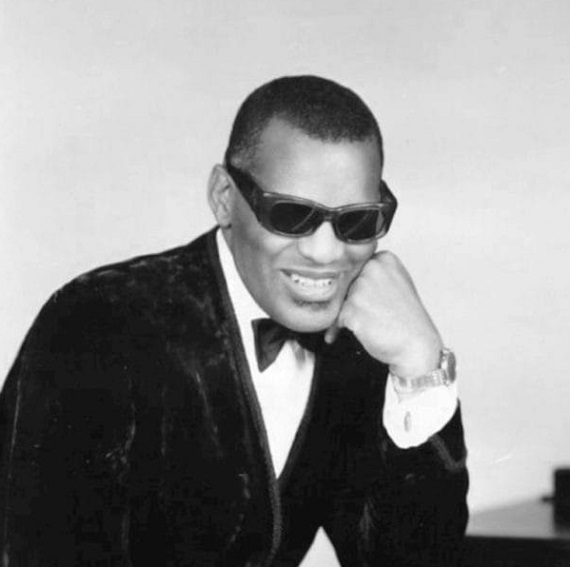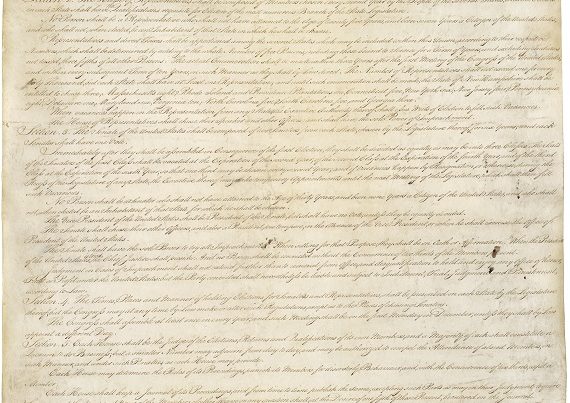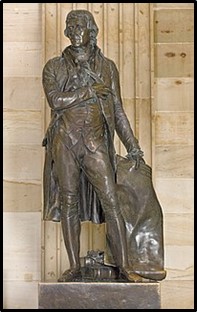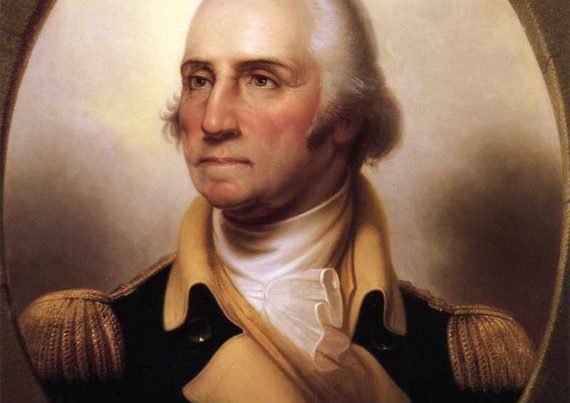
In this third installment of the series “What Makes this Musician Great,” I will try my best to explain Ray Charles, but I may already be in over my head. Previously, I have asserted that music is something that connects you directly to the mental state of the musician, and a vital part of that path involves forming a personal relationship with the musician. I’m not suggesting you need to go over to their house and visit for a while, but I strongly believe that knowing as much about the musician as possible makes their music more personal to you. This is not a paparazzi-based obsession with the mundane details of their celebrity status, but is more of a compulsion to understand the music by understanding the personal life of the musician. If a musician is going to write and perform music that draws on their personal experiences in life, then it’s up to you to understand what that means.
Have you ever listened to Classical music and thought it all sounded the same? Then maybe this will be good news to you, because an awful lot of it was composed specifically to sound exactly alike. They were doing it on purpose. Prior to the 19th century, musicians were not considered to be artists at all. They were servants, usually to the royal court, wealthy aristocrats, or to the church, and they were no different than butlers, cooks, or gardeners. There is an old joke that explains how everyone else allowed into Heaven gets to enter through the big main Pearly Gates, but musicians have to go around to the back and enter through the kitchen. Anyone who has ever played a live gig at a bar, restaurant, or night club will totally understand that. And back in the days of Bach, Vivaldi, Handel, Haydn, and Mozart, the servant music composer was compelled by their employer to produce music on demand for specific social functions, and they all wanted it to sound alike. Bach’s patrons included numerous wealthy aristocrats and politicians; Vivaldi’s patron was the Catholic church; Handel’s patrons were Queen Anne and King George I of England; Haydn’s patrons were the Esterházy family of Austria; and Mozart’s patrons were both the Archbishop of Salzburg and Emperor Joseph II of Austria. The one thing all of these wealthy and powerful patrons had in common was that they were definitely not interested in hearing a composer express his personal feelings in the music. They just simply wanted something functional that sounded like everybody else’s music, and the composers (as servants) were in no position to get freaky and experimental. In my opinion, Mozart was probably the first major composer to covertly insert his own personal life into the music, but no one really noticed what he was doing until after his death. Beethoven, however, was the first major composer to overtly make a career out of his own personal pain and suffering. As a result, Beethoven permanently changed the landscape of Western music, and ushered in an ongoing era of making music personal. Beethoven also permanently broke the system of noble patronage for musicians, as no one ever demanded music out of Beethoven. He wrote and performed what he wanted and when he wanted it. He was his own agent, and he ignored anyone who tried to tell him he couldn’t do something. He was also the first composer to be thought of as an artist by other contemporary artists. That’s why I firmly believe that Ray Charles was the Beethoven of Rhythm & Blues and Soul music. He put his own pain, suffering, and rejoicing into his music (both his original compositions and his cover versions of other composers’ songs), and he only performed what he felt like performing, much to the chagrin and/or horror of his own managers. Every time someone believed that he was committing career suicide, Ray Charles always got the last laugh.
Ray Charles Robinson was born in Albany, Georgia, raised in Florida, and lost his eyesight due to glaucoma before the age of seven. He attended the Florida School for the Deaf and Blind in St. Augustine until he was 14, and there he was introduced to the piano and the music of Beethoven. Ray Charles absolutely understood how to read music, even though he was blind. There is such a thing as Braille sheet music that requires a piano player to read the bumps on the page with one hand while playing them with the other, then switching hands after a while, and then eventually putting both hands together and playing the memorized music. When talking to blind musicians with whom I’ve played, they explained that the main purpose for the Braille sheet music was to teach them to picture the written music inside their heads so that it could be more easily memorized, and they could eventually discard the written Braille music altogether. This allowed them the freedom to “see” the music that their ears were hearing, and they could easily notate and compose original music.
Ray Charles was as eloquent a composer as he was a performer. His own original compositions are huge standards in the genre, and yet he performed and recorded cover versions in his own unique style that were frequently better than the originals. Therefore, was Ray Charles a virtuoso on piano? Absolutely, yes! I have heard isolated tracks of his music that focused only on the piano, and I knew instantly that I was listening to Ray Charles without even hearing his voice. Once he heard a style, he could master it and use it in his own sound at will, and one of the defining characteristics of the Ray Charles piano sound is that it’s a gumbo of Jazz, Blues, Gospel, R&B, Soul, Country, and Rock (all of which are Southern, naturally).
The vocal style of Ray Charles is where the real magic is found. I have written before about the evangelical nature of Southern culture and Southern music, and that this infusion of “soul” is one of the most important things to set us apart from the Yankees. We have it, and they don’t (unless they try to copy it from us). Nat King Cole soothed us with his velvety voice, but Ray Charles shook the back of the house getting an “amen,” brothers and sisters, Devil get out, hallelujah!
Was Ray Charles a religious man? He was raised to be a strict Baptist by his mother, and remained a deeply spiritual man, despite his aggressively sinful adult life of drug addiction and failures of the flesh. As he grew older, he considered himself to be multi-denominational, and demonstrated a strong belief in God and his immortal soul, but not a strict following of any one particular church. Was he political? Ray was deeply involved with the Civil Rights movement of the 60’s while remaining strictly “middle of the road” politically. Just like Beethoven, no particular power (political or otherwise) demanded anything of Ray Charles. He kept his own council and remained his own boss. At a time when the world began calling for national boycotts, Ray Charles played a tour of apartheid South Africa in 1981. When the United Nations asked him to apologize for the tour, he told them to kiss his ass. He played at Ronald Reagan’s second inauguration. When his detractors claimed that Ray Charles would play a Ku Klux Klan rally if the price was right, he laughed and said it had nothing to do with the price. Although a vast majority of people totally missed his point, I understood exactly what he meant. For so many musicians, they don’t give a rip about the pay or the occasion – all they want to do is play music, and let everybody else haggle over “the occasion.” I have been kicked out of more than one band because I was willing to play jobs for no money.
That type of disdain for his unique views was nothing new to Ray Charles, as he weathered that same storm of criticism when he branched out into Country music in 1962. Like so many of his fellow Southerners, he had grown up listening to the Grand Ole Opry, and had developed a love and appreciation for hillbilly music. I have maintained repeatedly in many of my writings that one of the most ironclad truths about Southern music is that it is not black music or white music – it is SOUTHERN music. It is a shared experience for all of us, regardless of skin color, and Yankees have always had a hard time accepting that, bless their narrow-minded little hearts. Hearing Ray Charles sing Country music standards might have been bewildering to ignorant Yankees, but it made perfect sense to Southerners. I have seen it written more than once that it was a “sell out” for Ray Charles to record and perform Country music. Yet, how can it ever be a “sell out” to honor your own roots? Coming from Georgia and Florida, Ray was a country man – he knew it, and so did all of us. Southerners have as little problem accepting Ray Charles as a Country singer as they would have accepting Hank Williams as a Blues singer, because both situations are absolutely correct.
In the 1940’s, African American music was being pulled in a lot of different directions. While Swing Jazz was the most popular form of African American music in the urban communities, the rural black communities still preferred String Band music, even though it was starting to be on the way out. Gospel and Spiritual music were popular in both the urban and the rural communities, and the advent of radio made the singing of crooners, such as Nat King Cole, a big deal. Of course, the Blues were still highly popular in both the urban and the rural communities as well. Following World War II, a new style began to emerge on the radio, which was a blend of Swing Jazz and the Blues, called Jump Blues, and it was propelled into popularity due to the Armed Forces Network. Jump Blues was almost always in a strict 12-bar blues form, but unlike standard Blues it was very up-tempo and energetic, and it featured a horn section.
All of these styles of music that were popular in African American households were categorized together in Billboard Magazine (the music trade publication for American music) as “Race Music.” There was a separate Race Music chart every week in Billboard where you could find all the hit songs that were Jazz, Swing, Blues, and especially Jump Blues. In 1949, a young copy editor at Billboard named Jerry Wexler suggested changing the name of the Race Music category to something he’d coined called “Rhythm & Blues,” and the idea stuck. As soon as Billboard started calling it Rhythm & Blues, the rest of the music industry followed suit, and we’ve been calling it Rhythm & Blues ever since. The first hit song to be categorized as a Rhythm & Blues song was “The Hucklebuck” by Tennessee saxophonist Paul Williams, and it was a little bit controversial as the basic beat to the song was taken to be sexually suggestive. That controversy propelled “The Hucklebuck” to be a huge crossover hit with both black and white audiences, which solidified the permanence of Rhythm & Blues. Five years later in 1954, “Sh’Boom” by The Chords became the first Rhythm & Blues song to be a #1 hit on the white charts. One year later, Ray Charles had his first #1 hit.
Considering all of the various Southern musical styles that were popular in African American households, Ray Charles could definitely play and sing all of them, including Country, Blues, Jazz, Gospel, Jump Blues, and Rhythm & Blues. He had an ease in connecting to the audience and telling a story that was largely due to the evangelical nature of his voice. When Ray sang, it felt like he was singing directly to you, and he was able to animate the lyrics with his unique vocal inflections to give them power and meaning.
I will focus on three specific songs recorded by Ray Charles, and narrow my focus to the powerful spiritual delivery, performance magnetism, and stylistic authenticity that should help explain Ray Charles to anyone, including those that already celebrate his music. If not, then hit the road, Jack.
“I Got a Woman”
In 1952, an up-and-coming Rhythm & Blues singer named Ray Charles was signed to Atlantic Records, and was produced by a man that used to work for Billboard Magazine named Jerry Wexler (remember him?). His finally got his first #1 hit for Atlantic in 1955 with a powerful little song he co-wrote called, “I Got a Woman.” This controversial masterpiece would become one of the foundational songs for rock and pop music for the rest of the 20th century and beyond, and it is pure compositional and performance genius. Without question, it is a highly sexualized set of lyrics sung in a Gospel style, as Ray Charles purposefully blurred the lines between sexual gratification and religious rapture. Most importantly, it was a huge crossover hit, and endeared him permanently to both black and white audiences. If you didn’t understand English and had no clue what he was singing, you’d be convinced it was something straight out of a church revival. But since you understand English, you’re in on the joke. Specifically, pay close attention starting at about 1:04 for that special moment you’re looking for. With a song like this, it’s not difficult to understand where Rock ‘n Roll comes from – just take this and add Country music, and there you are. For other classic Ray Charles hits with this same sound, try “What’d I Say?” and “Hit the Road, Jack.”
“I Can’t Stop Loving You”
Although this nearly over-produced version of a Country song might have caused some to scratch their heads (released during the crest of all his R&B killers), Southerners understood that Ray Charles was being truly authentic with himself. It was featured on an entire album of like-minded songs called “Modern Sounds in Country and Western Music,” that was released in 1962. That was an interesting year in American music, because it came after the collapse of the early Rock ‘n Roll pioneers to various scandals, the Army draft, or death, and it was prior to the arrival of The Beatles and the British Invasion. It was kind of an “eye of the hurricane” moment in American music, and a perfect one for one of Ray’s boldest experiments and biggest hits.
Frequently, I tell my music students that all the true emotion in any song is within the dynamics, or expressive changes in volume, and “I Can’t Stop Loving You” is one that I use as a classroom example. The lush instruments and angelic choir build up, rise, peak and fall several times through the song, and cutting across all of it is the calm, soothing voice of Ray Charles. If there is any specific moment of pure golden magic, it begins at 2:26 when Ray begins to mimic the choir in a call-and-response fashion. Whatever they sing, he repeats, and the pinnacle occurs at 2:43 when the choir sings a straightforward “still make me blue,” but Ray’s response is a drawn-out bluesy “still ma-a-a-ake me blue.” This is the song that transformed Ray Charles from an American pop star to an international artist.
Oh, What a Beautiful Mornin’”
I realize that there are many more recognizable songs that I could have chosen, but since this is my article, then I get to pick my personal favorite Ray Charles song of all time. His version of Rodgers and Hammerstein’s classic from “Oklahoma” is perfect genius, and appears on the 1977 album “True to Life.” It’s an album that I nearly wore out in high school when it was released, and seems to be hard to find, now. As I mentioned in the example above, the true emotion in a song is hidden within its dynamics, or volume changes, except Ray doesn’t hide anything here. When the song gets louder, it does so with a sudden bang, and when it gets softer, it backs off gradually and deliberately. This pattern repeats several times in the song like a roller coaster ride of emotional dynamics.
This song begins with just Ray and his electric piano softly for the first verse, followed by soft drums and bass joining in for the refrain. At 1:20, Ray invites the rest of the band “y’all come on, now,” and the background horn figures begin softly. The second verse continues with Ray’s voice, light rhythm section, and light horns, and continues this way into the refrain, until you suddenly get sucker-punched at 1:50 on the word “morning.” All at once, Ray unleashes the full power of his voice and the full band pounces with him to finish the refrain. The familiar melody becomes something totally different in Ray’s hands. You did not see that coming. For a few seconds, the band scales down, and returns to the mellow background notes to head into the third verse, but a funny thing happens before you get there. You just THOUGHT you’d heard the full band earlier. At 2:25, the actual full band is turned completely loose, and Ray eggs them on through the microphone. After a good 35 seconds of these musical bunny kicks, the band and Ray calm down a little into the third verse at 3:00, but it won’t last. At 3:25, they all take off again following Ray’s lead with his unbelievable voice for the final time through the refrain. Then, beginning at about 4:00, Ray and the band vamp for the next 45 seconds and bring the energy back down yet again. The song does not fade out at the end, but merely gets softer until everyone ends on a diminishing long note (with muted trumpets, even). It’s a roller coaster ride, and Ray Charles takes you through plenty of twists, turns, and loops as the expressive dynamics clearly set the tone and meaning for the whole piece.
I want to leave you with one last video selection, which is also a personal favorite of mine. This is Ray Charles and The Blues Brothers, featuring the MG’s as the backup band, performing “Shake a Tail Feather.”
“Shake a Tail Feather”









